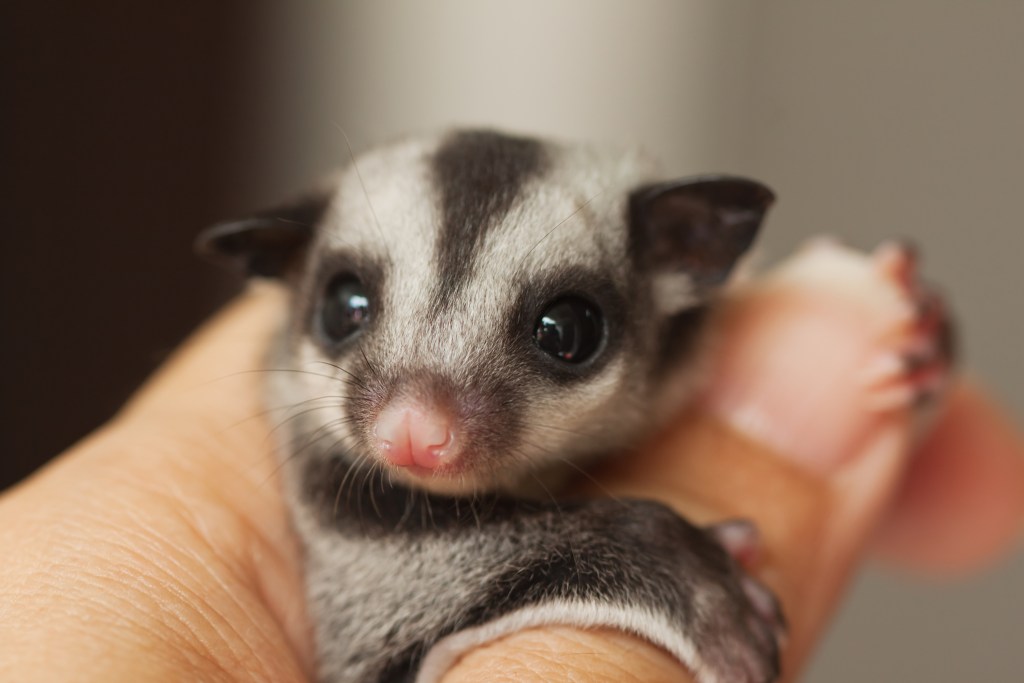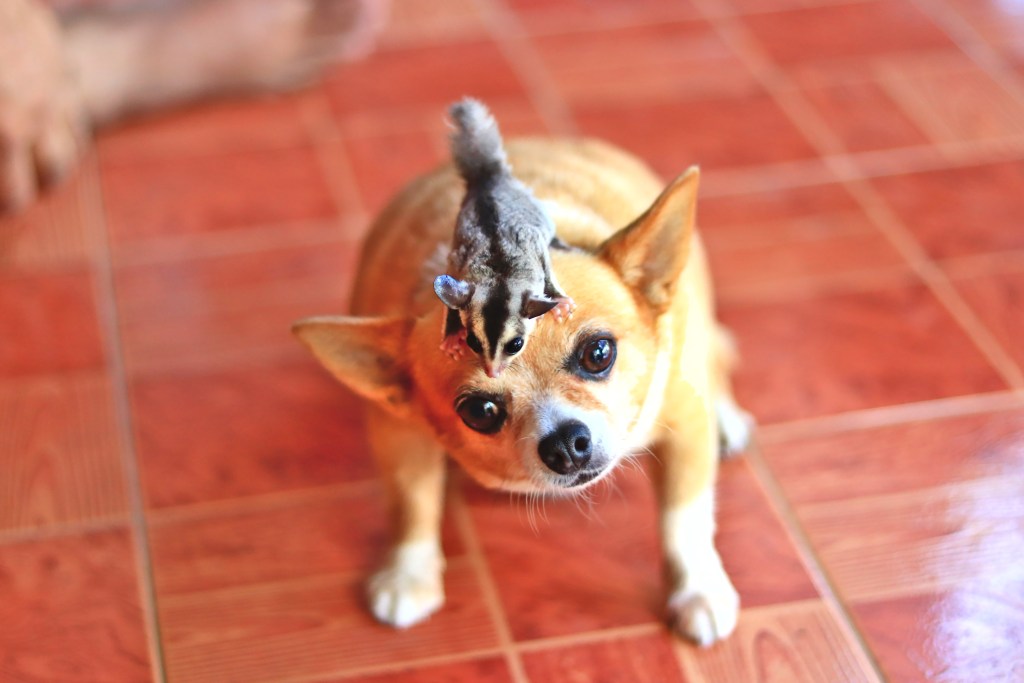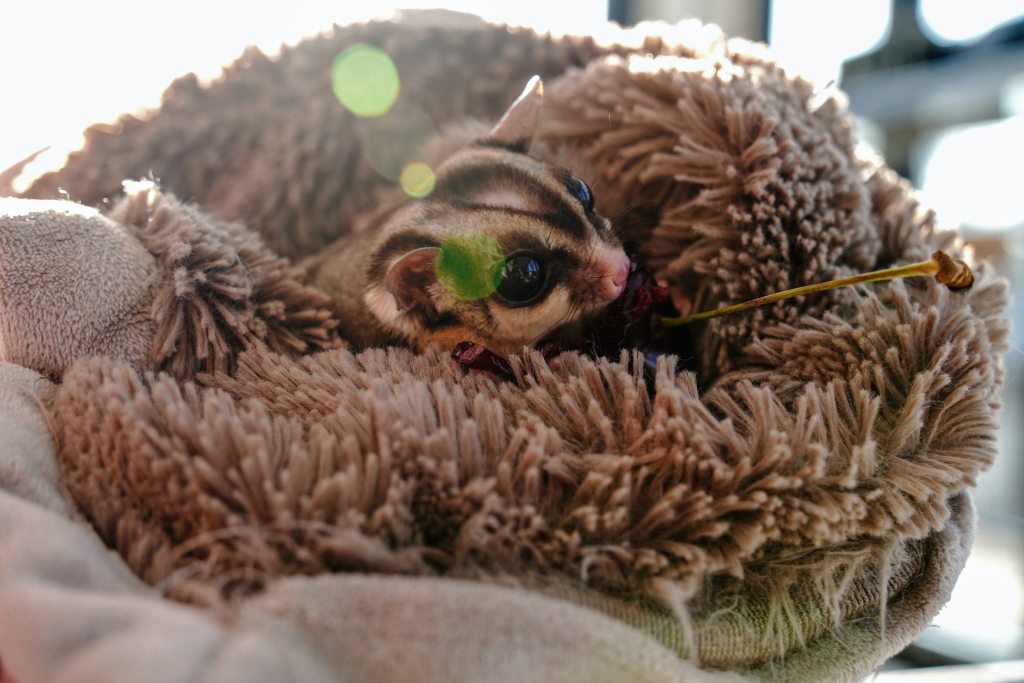
Choosing a small pet involves almost as much deliberation as selecting a breed of dog. While there are a lot of factors to take into account, a sugar glider might turn out to be the perfect fit with their curious personality, attachment to your family, and fondness for pockets.
Like any exotic pet, gliders require expert care plus some dedicated research to choose the right breeder or pet store. But with the right prep, your new mammal will fit in perfectly and bond with the whole family. Keep reading to find out if sugar gliders are good pets.
What are sugar gliders?
Unlike most little pets, sugar gliders aren’t rodents but marsupials. This gives you a few distinct advantages, as they behave differently from hamsters, guinea pigs, or gerbils. For starters, these are highly social creatures and they will bond with every member of the family and even other pets in the house. Because gliders don’t smell like the animals your cats and dogs like to chase — rats, gophers, and bunnies, to name a few — many bigger pets can get along with your new friend. You’ll need to introduce them carefully, but they can form lifelong attachments to each other.
Many owners recommend getting a pair or a small family, so they can keep each other company, especially at night when they like to play (and you like to sleep). Also, some people with allergies find they coexist just fine with this mini marsupial, unlike with other pets that might trigger sneezes. Best of all, sugar gliders live up to 15 years! You’ll have your furry friend for a long time.

How do they act?
Because your new best bud will bond with everyone in the household, you’ll need to spend a lot of time handling and playing with them. The good news is they will love just sleeping the day away in your pocket or bag — really anywhere they can feel like they are close to you.
Remember, these little buggers from Down Under are nocturnal, which means they’re energetic at night. You’ll probably want to maintain their enclosure outside of any bedrooms. Since they also need room to move, it’s best to give them a large space. Select an area of the house equipped for a big cage. Be careful if you’re keeping a few males together as they can become territorial, and you don’t want them fighting or marking their territory (ew).

Who can own a glider?
Many places in the U.S. require a permit and some prohibit keeping them as pets entirely. You’ll need to carefully look into all laws and restrictions — even your homeowner’s association or similar might have rules about these unusual animals. On the state level, Alaska, California, and Hawaii have all banned sugar gliders (and some other exotic pets).
When picking out your new fuzzball, you must diligently research breeders, too. First, make sure they’re licensed by the U.S. Department of Agriculture, but that’s just the beginning. Look at where the gliders were kept as babies and make sure the parents and littles look healthy. Never take a young one away from their mom under 12 weeks. If you want to go the extra mile, find a homeless animal nearby to adopt. Since they live for over a decade, you can take in an older pet and still have a long time together. If you’re extra mindful of bonding, your glider will adapt in no time.

How do you take care of one?
Sugar glider care is complex, and you should consider whether you’re up to the task before bringing him home.
Research local vets
Not every animal doctor will accept an exotic pet like this, so you’ll need to find someone in your area who does. However, marsupials don’t catch the same diseases as cats or dogs and should require fewer checkups if everything’s going well.
Buy materials
The cage and sugar glider nourishment will both go on this list (more on those later). In addition to the usuals, you will also need bedding, cleaning supplies, plus a food and water bowl.
Get the right food
Because the sugar glider likes to sleep during the day, their biggest feeding time happens in the evening. They love to snack on fruit, but protein needs to be the staple of their diet. Specially designed food from the pet store will nourish them well, though you can try feeding them bugs, too, which they heartily enjoy.
Set up their cage
As the name suggests, these critters can jump from branch to branch in the wild or from branch to your hand in captivity, so you should add many perches to keep them entertained. They also have to work to stay warm since their ancestors came from tropical forests. Include a heating source in the housing, especially if they sleep there at night when temperatures drop.
Accessorize
Just providing your pet with the basics won’t lead to a fulfilling life. You want to add a nest, whether a box or hammock. On top of that, look into toys, either for gliders specifically or toys for birds, which are often of interest.
While not right for everyone, a sugar glider might perfectly complete your family. Many owners find carrying them around becomes second nature, and lots of these pets travel really well because of it. If you research thoroughly and train them carefully, you’ll have a friend constantly by your side.
Editors' Recommendations
- What causes high pH in an aquarium? We’ll walk you through getting your tank levels in check
- 7 telltale signs of a dying hamster (and what you should do)
- Best reptile pets: These are the 5 most affectionate reptiles you can welcome into your home
- Bunny care 101: If Easter inspires you to adopt a rabbit, read this first
- Are female betta fish worth it? Here’s why you should consider getting one of these pretty fish




